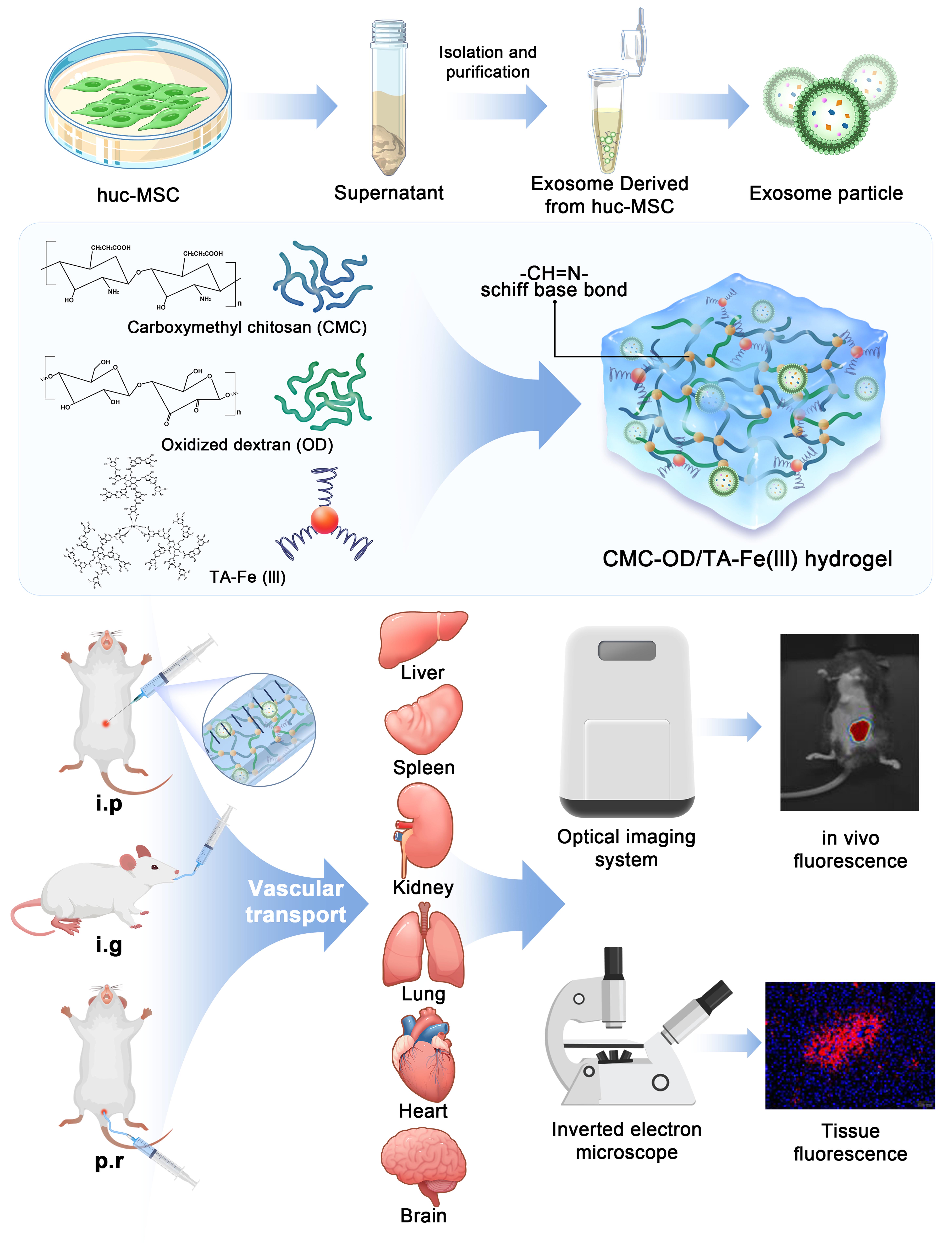
Biodistribution of hydrogel sustained-release umbilical cord mesenchymal stem cell-derived exosomes in animal models
Zongbin Sun1, Qiuxia Zheng1, Chongyang Bai1, Xun Li1,2, Jia Yao2.
1First Clinical Medical College, Lanzhou University, Lanzhou, People's Republic of China; 2First Hospital of Lanzhou University, Lanzhou University, Lanzhou, People's Republic of China
Lanzhou University. Key Laboratory of Biotherapy and Regenerative Medicine.
Exosomes derived from mesenchymal stem cells (MSCs) have been extensively investigated as exosome-based therapeutics for the precise treatment for microenvironments disruption, however, systemic administration approach results in their extensive clearance by the endothelial reticular system. Long-term preservation and sustained-release formulations of exosomes are needed to improve treatment efficacy. In this study, a biomedical hydrogel material with favourable biosafety characteristics (carboxymethyl chitosan-oxidised dextran/tannic acid iron complex [CMC-OD/TA-Fe(III)]) was used to encapsulate exosomes derived from umbilical cord MSCs. Small animal live imaging and tissue immunofluorescence assays demonstrated the distribution of slow-release hydrogel exosomes delivered via intraperitoneal injection, oral administration, and rectal administration. At 24 h, the accumulation of exosomes was the highest in the liver, followed by the spleen, with the brain having the lowest accumulation. Based on the results of this study, we speculate that, in the case of multiple administrations, sustained-release exosomes may also accumulate in large quantities in various organs through the intragastric and rectal routes, which is also a non-invasive treatment compared to intraperitoneal route. Notably, the intragastric administration route also showed ideal organ exosome concentration; this suggests oral intake as a new exosome administration method, which provides a more convenient method for exosome therapy. However, the hydrogel/exosome delivery system utilized in this study needs to be refined further for practical clinical applications; thus, we aim to optimize the design of hydrogel/exosome delivery systems to treat diseases in a safer, comfortable, and effective way in the future. Overall, we believe the therapeutic strategy developed in this study lays a foundation for the application of hydrogel-carrying stem cell-derived exosomes as precise and efficient regenerative treatment for diseases of many organs, especially in liver disease.

This work was supported by Grant(s) from the National Natural Science Foundation of China (32160230), Special Projects for Scientific and Technological Achievements and Applications of Gansu Province (24ZDCA008), Talent Innovation and Entrepreneurship Project in Chengguan District, Lanzhou City, Gansu Province (2022RCCX0024)..
[1] Hydrogel
[2] Umbilical cord mesenchymal stem cell-derived exosomes
[3] Slow-release
[4] Biodistribution